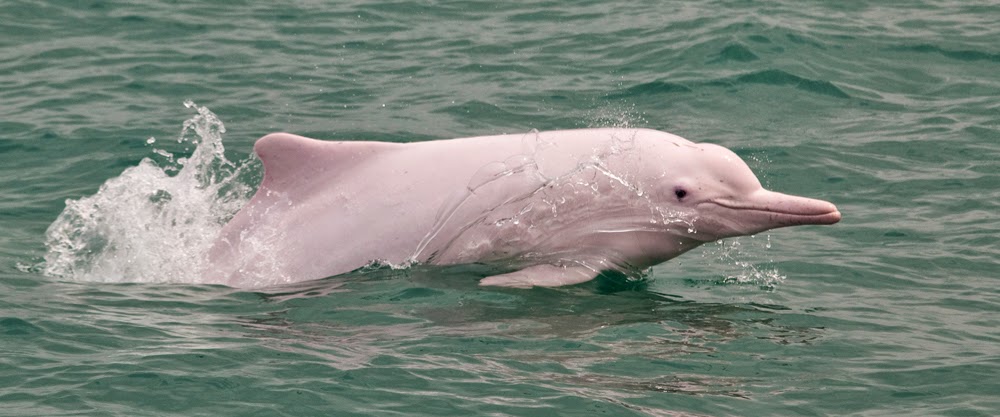

Due to the travel restrictions of late, Hong Kong's waters have emptied some of the areas of bigger boats, making it rather quiet in comparison to the past. So, making the most of the tranquillity, the Indo-Pacific humpback dolphins have returned.
Known as the Chinese white dolphins, their comeback has given scientists a once in a lifetime opportunity to study the impact of underwater noise on the aquatic mammals. Marine scientist Lindsay Porter of the University of St. Andrews, who has studied the dolphins for three decades, says, "Since the ferries have stopped in this area, dolphins that we hadn't seen for four or five or even six years, are back in the Hong Kong habitat."
Relying on photography and underwater recordings for their research, tracking and logging the dolphin's behaviour, Porter and her team, study the dolphins. She says, "Now people think, how could you possibly recognise one dolphin from another. All we do is take images of their dorsal fins and believe it or not, the shape, the markings, the colouration of the dolphin, is so varied between individuals, that it's quite easy for us to tell the difference."
Dolphin sightings now appear to be up as much as 30%, which Porter says is remarkable, to see how rapidly the dolphins appear to have adapted to the changes in their environment. But there's pause among the excitement, as the increase in numbers is likely to reflect new migratory patterns for now, rather than a growing population.
While pinning down the exact number of the population is a tricky task, Hong Kong World Wildlife Fund (WWF) estimates the dolphin population in the Pearl River estuary to be around two thousand, whereas a survey by the University of Hong Kong put the number at around 400 in 2017. And, Hong Kong government said the latest figures showed only 52 dolphins in 2019. However, the WWF attributes the discrepancy to different research methodologies.
According to the report, the city's government has taken an active interest in improving its conservation policies in recent years and operates six marine parks which have certain restrictions on marine traffic. But conservationists have criticized these measures as insufficient, arguing that the dolphins remain at risk of colliding with high-speed ferries.
Porter has cautioned that despite recent improvements, Hong Kong's dolphin population may never return to sustainable levels. "I sometimes feel that we're simply documenting the demise of this population of dolphins. But I feel that it's important that we do understand what the impacts are of man and his activities on this population, so perhaps we can use this knowledge elsewhere to save or protect better other dolphin populations," she warns.
